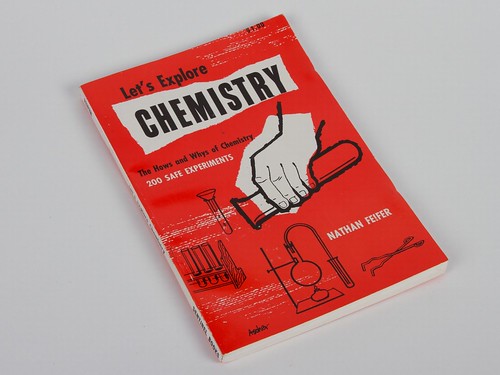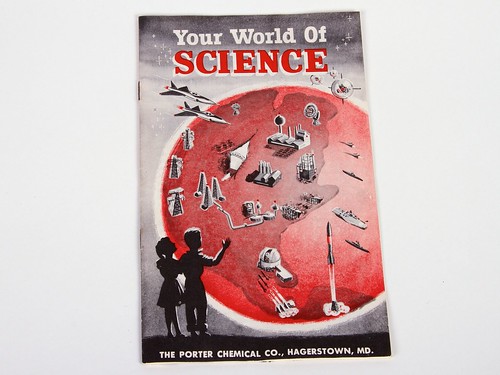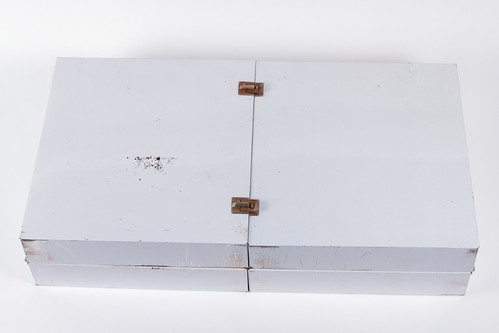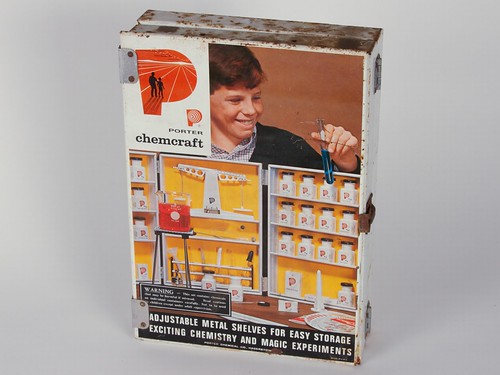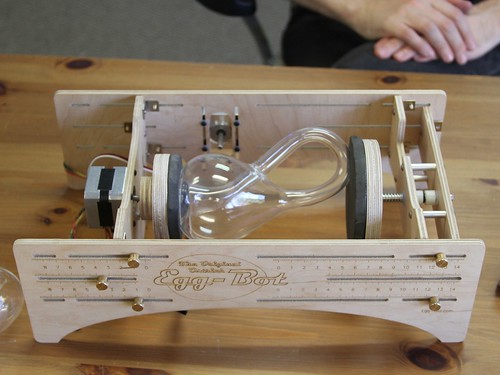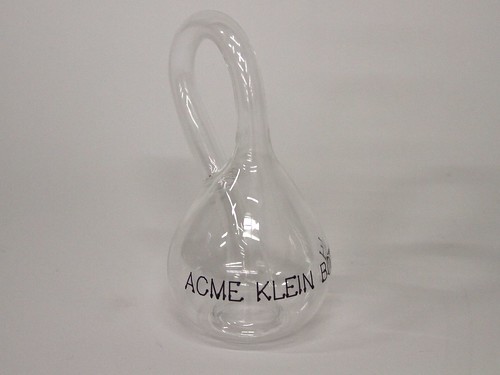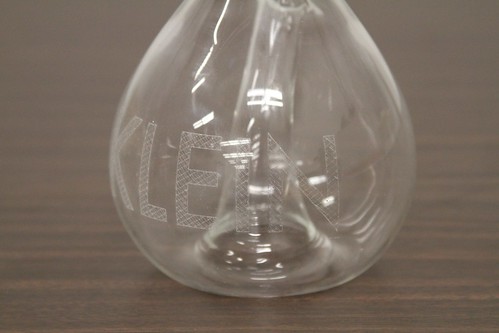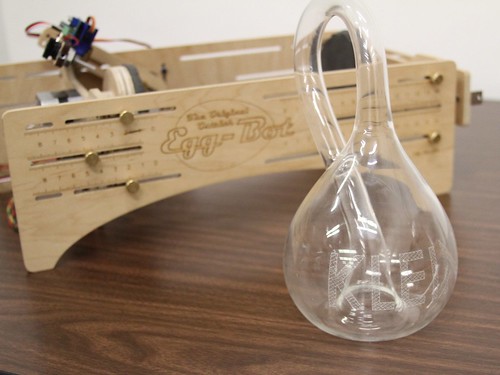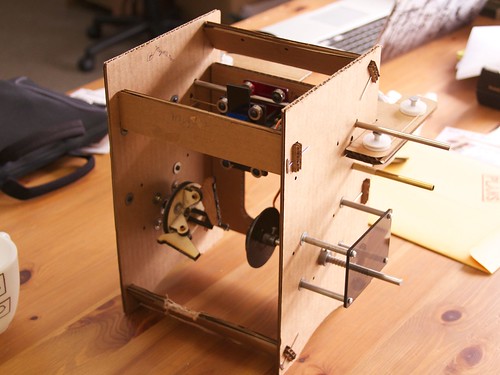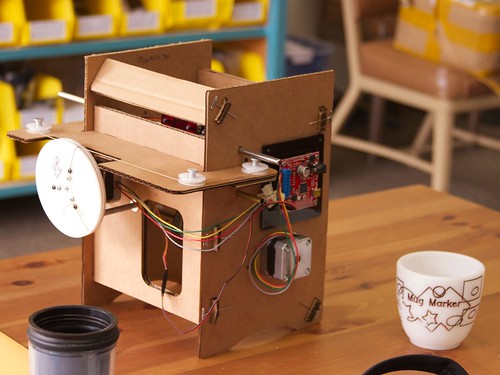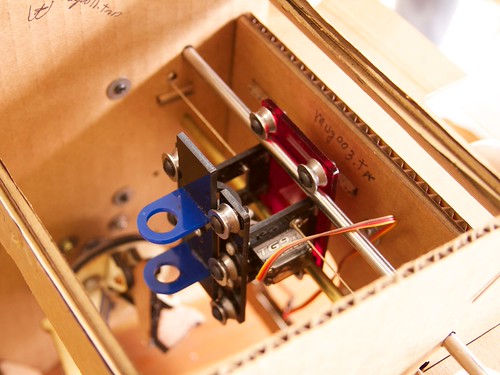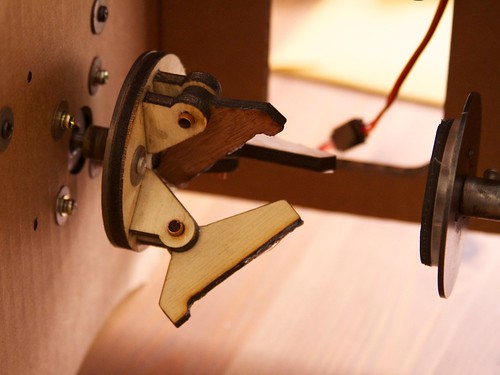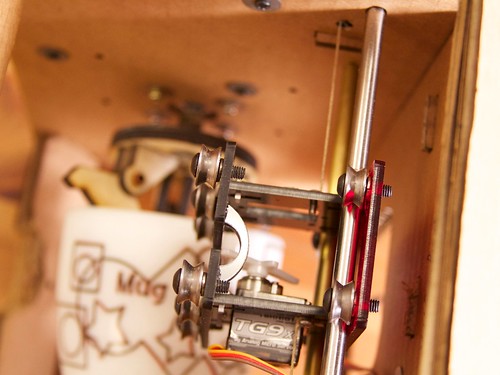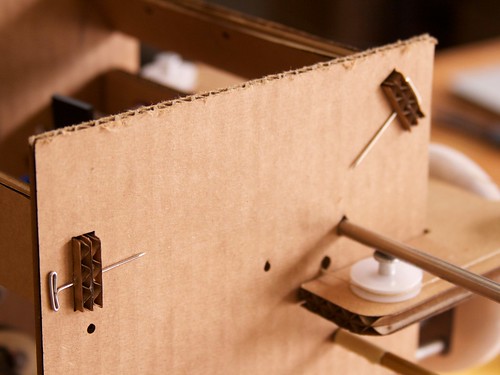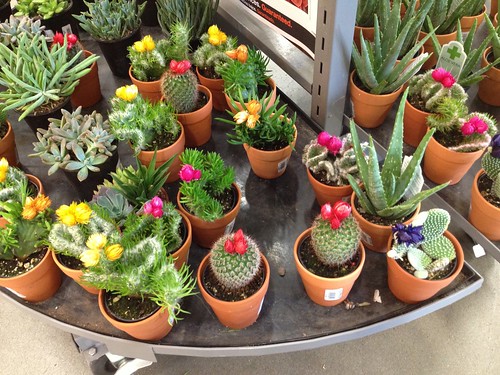Even while the Kickstarter campaign for our WaterColorBot is in full swing, we’re continuing to improve its hardware design. Here are a select few of the refinements we have made since the last revision that will make the WaterColorBot better for everyone.
Open Medical Hardware: The Open Stent
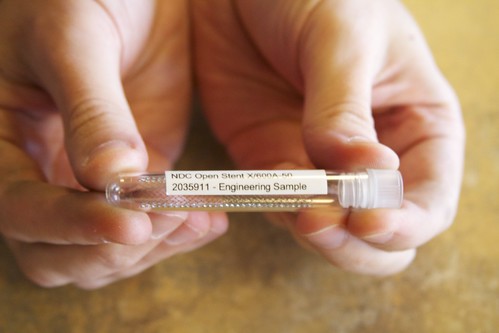
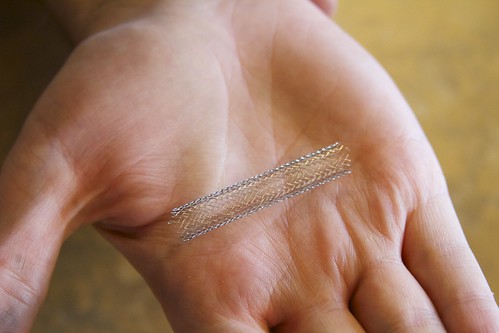
The stent pictured above is an example of an Open Stent from NDC, makers of nitinol materials and devices, particularly for medical applications. In their introduction to the project, they write:
The first problem that we encounter when developing useful and practical educational resources for stent design is that every design we might want to use as an example is proprietary! That leaves us without much to talk about… So to solve this problem, the first step was to create a design to use as an example. The Open Stent is designed to be completely generic, but also realistic, and relatively easy to modify and extend to be useful for whatever purpose a designer intends.
In addition to publishing their draft of Open Stent Design, which they call “a practical guide and resource for design and analysis of a generic Nitinol stent,” NDC has provided extensive calculation tools and CAD files as well, to help others evaluate and create derivatives of the design.
The project is a fascinating open source hardware use case, where creating an open design provides a platform for education and discussion where none existed before. It’s also very exciting to recognize this as an early example of open source hardware in the field of medical devices— one of the places where open hardware can potentially make a very big difference in the world.
Evil Mad Scientist Open House, August 12
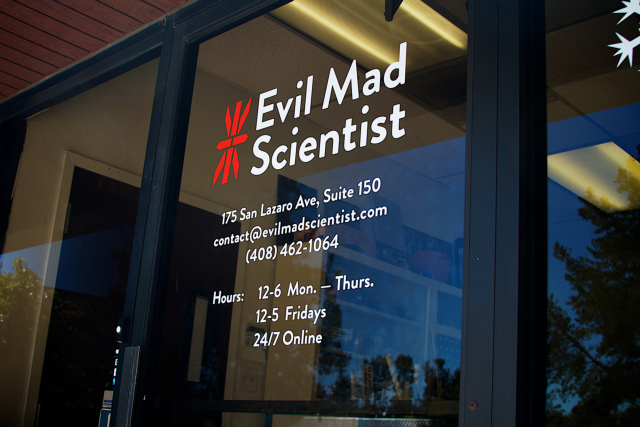
If you’re in the San Francisco Bay Area next Monday, we hope you’ll join us for an open house:
When: Monday, August 12, 5 pm ? 9 pm
Where: Evil Mad Scientist Laboratories
175 San Lazaro Ave, Suite 150
Sunnyvale, CA, 94086
Come see the WaterColorBot in action (just a few days before the end of our Kickstarter campaign!), meet minor internet celebrity Zener the cat, and share in food and conversation.
Vintage Chemistry Manuals
Remember those vintage chemistry sets that we opened up the other day? We left out one of the coolest things that came along with them: A thick stack of fantastic manuals, instructions, posters, and charts. Let’s take a look through them!
Using Artist Grade Materials with the WaterColorBot
One of the questions that we’ve had on the WaterColorbot is about its ability to use higher-quality materials. And in particular, can you use it with fine (artists’) watercolor paints?
The WaterColorBot comes with a starter set of Crayola watercolors. This kind of paint set is great for kids and great for learning how to use the WaterColorBot. And in the United States at least, it’s also easy to obtain direct replacements from your local office or art supply store.
But on the other hand, watercolors like these do not offer the depth or range of color nor the archival quality that professional artists expect and require. And, replacement paint sets may not be so easy to find overseas, or even in less urban areas of the US. Fortunately, you can use the WaterColorBot with other paints, and we’re working on expanding the number of different ways that you can.
The first, easiest solution is to note that the Crayola paint set actually comes with (well, in) a perfectly-sized paint palette; simply rinse out the remaining paint with cold water.
The empty Crayola palette can be reused with tube-based watercolor paints, which are available at art supply stores worldwide. Like dry (pan) watercolors, tube based watercolors are available in many grades, from very inexpensive to fine artists’ watercolor, and in a truly impressive range of colors.

While the the empty Crayola palette is perfectly serviceable, it is a bit flimsy, and we are also planning to offer a couple of more durable permanent palettes as optional accessories for the WaterColorBot.
Here is the first of those accessories: A milled plastic palette for use with tube-based watercolor paints. It’s tough and permanent with eight oval wells.
For artists who prefer to paint from pans (dry paint), our second accessory is a palette that cradles up to eight “standard” half pans, which are one of the preferred shapes for artists’ watercolors. The word “standard” is in quotation marks because there is actually quite a range of variation in the size of half pans; this particular palette is sized for Winsor & Newton (and Cotman) watercolors. We also plan to offer other holders to fit half pans from other manufacturers.
And what about paper?
The WaterColorBot is designed to fit 9×12” paper, which is one of the most common sizes for watercolor paper. Heavier and finer grades of paper (140 Lb, 300 Lb) can be used without issue, and standard methods for affixing paper to the board– such as tape and tacks –will work just fine. Larger sheets of paper can be cut down to fit, and smaller paper– including A4 and US letter –can be used, although you may need to pay attention to the margins.
Vintage Chemistry Sets
A good friend recently presented us with his estate sale find: two 1960’s era vintage chemistry sets. One set is big, white, and mysterious, the other is smaller but showier. Let’s take a look at what’s inside!
Marking Klein Bottles with the Eggbot
We were lucky enough to have a visit from Cliff Stoll, geek celebrity and proprietor of Acme Klein Bottle. Acme is the finest source of Klein bottles on the internet.
Cliff came with an esoteric dilemma: how to engrave a glass Klein bottle. Acme Klein bottles are blown from borosilicate (Pyrex) glass, which has a low coefficient of thermal expansion, which means that the usual way of engraving a curved glass surface—laser engraving—doesn’t actually work. With more common types of glass, you can use a laser engraver to etch anything you want into the surface. But with Pyrex, the surface simply melts unevenly rather than creating the microfractures that give an etched appearance.
So how would you etch the curved surface of a Klein bottle? It turns out, to our surprise, that it is remarkably easy to do it with an Ostrich Eggbot fitted with a diamond engraver attachment.
There was one complication, which is that a Klein bottle is a funny shaped object! In order to fixture the Klein bottle in the Eggbot, we made a couple of extra large couplers—much larger than the tiny pads normally used to hold the ends of an egg—with EVA foam rubber pads on their surfaces. The extra large couplers held the Klein bottle securely for rotation.
We did some initial tests with Sharpie and a medium sized Klein bottle to make sure our fixturing worked well.
And then we hooked up an engraver for a real test.
Here’s what the Klein bottle looked like after engraving. Not being particularly creative, we etched the word “KLEIN” into the side. Because the Klein bottle is made from thick borosilicate glass, it takes engraving remarkably well. It is a much more sturdy object than the fragile Christmas ornaments that we have engraved in the past.
While we can’t imagine that it is a major market segment, the Eggbot seems to be ideal for working with Klein bottles (insomuch as anything can be perfect for working with a closed, non-orientable, boundary-free manifold). But regardless, it’s quite wonderful to find an unexpected application like this, where our little robot can solve a real-world problem that we had never even considered.
WaterColorBot at Dorkbot SF, 7/31

Dorkbot SF, the San Francisco chapter of Dorkbot, is having its next meeting tomorrow, July 31. And, we will be bringing along the WaterColorBot for show and tell between the main acts. So if you’re in the area, this would be a great opportunity to come and see the WaterColorBot up close and personal.
Dorkbot is a loosely organized sporadic meeting of people generally interested in “Doing Strange Things with Electricity.” The event will be at Otherlab starting at 7:30 pm. You may know Otherlab from their wonderful Othermill recently launched on Kickstarter. Anyone can attend and admission is free, although there is a suggested donation.
The Mug Marker
Don McRae recently stopped by our shop last week to show off his homebrew CNC project, the “Mug Marker” — a wonderful little cardboard robot that can draw on mugs.
Much like the Mug Plotter on Instructables, it uses the same EBB controller board and stepper motors as the Eggbot, but with linear motion for the pen instead of rotation. However, unlike that version, Don has incorporated the same winch-drive mechanism that we use on the WaterColorBot to provide motion for the linear axis– meaning that it can go fast or slow, with very good accuracy.
Don laser cut the large white winch on the back of the machine from acrylic. It controls a string that pulls the pen carriage back and forth as it rides on a pair of rods:
The pen holder itself slides into some additional bearings, and has a small protrusion on the back that rests on the servo horn, allowing it to be lifted up or lowered down. Like the Eggbot’s pen-lift mechanism, this mechanism only (actively) lifts the pen, which means that it can ride over uneven surfaces, or plot on mugs with variable diameter.
Underneath the pen carriage, the opening of the mug fits onto a three-jaw coupler on the motor shaft, and the base of the mug is held against a rubber faced spring loaded plunger. Small copper tubes are used as bushings to allow the coupler pieces to rotate inward or outward to allow mugs of differing diameters to fit on. A little silicone on the surface of each of the three parts provides a gripping surface, and the upcurved lip keeps the mug from sliding too far.
Looking down through the pen carriage, you can see the mug below held in the coupler.
The chassis of the machine is made from cardboard, either hand or laser cut to slot together, and held together very cleverly with pins. The whole machine is put together from a combination of off the shelf parts and found materials, many of which are laser cut for the correct shape. For software, Don uses the Eggbot Inkscape extensions with very reproducible results.
Thanks to Don for bringing it by and letting us take pictures!
Foul Play in the Floral Department
While walking through Home Depot on an unrelated mission, we happened to walk by a display of succulents, and were struck by the unusual blue color of some of the flowering cacti.
But on closer inspection, we could see what was really going on: the flowers on the top were attached… with glue. In fact, most of the flowers on the cacti and succulents were glued on. Some of them, like this winner here, even had globs of glue spilled down onto the spines of the cactus below.
This is a deceptive (yet sadly common) practice— and apparently many people do get fooled by it —as we found garden forum posts and warning articles about it, including here, here, here and here. This seems not so far away from buying a fruit tree at a nursery, only to find out (once you get it home) that the fruit was only glued to the tree.
It looks like they are trying to make the less showy cactuses compete with the brightly colored grafted ones that they sell, like the ones shown pictured here. (This may not be a naturally occurring configuration, but at least it is a real, living plant.)
Strawflowers are used because they keep their color well after drying. They also open and close as the humidity changes and they absorb more water or dry out more, giving the illusion of being part of a living plant.
And if it’s not bad enough that the customer is being deceived about the nature of plant they are buying, the glue can often damage the plant below, especially during the removal process.





